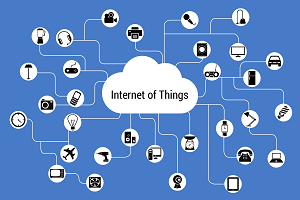When we talk about the devices that make up the Internet of Things (IoT), what comes to your mind? Smartphones, wearables, light bulbs, refrigerators, thermostats, smoke sensors, infotainment systems – the list can be endless. These connected devices became an integral part of our daily lives and their number will continue to increase year after year, according to the experts’ forecasts.
As human interactions with connected devices become stronger, GUI developers face challenges each day when designing for IoT. These challenges arise from the following specific characteristics:
Smaller screen sizes.
Majority of the devices have small visual interfaces, there are less buttons to push and scrollbars to pull. Small screen size limits the information that can be legibly displayed, thus creating additional difficulties in developing usable GUIs.
Disparity of device branding and cues.
Branding nowadays takes new forms other than pixels – voice, sound tone, and tactile feedback. They are more natural for people, but require additional flexibility and better understanding of how to communicate brand experiences using these forms.
Designing for multi-device experiences.
These days, it is difficult for companies to have their product, website, mobile app, etc. working independently from one another. As a result, multi-device experiences are becoming the norm for consumers and another headache for developers and designers.
User expectations of immediacy.
Consumers now have higher performance expectations for their connected devices than ever before. They require increased operation speed, greater scalability for resource-constrained devices, rich graphics, improved battery life, security for data storage and transmission, authentication, and other features, that may complicate GUI development process.
Based on the factors listed above, one can say for sure that building IoT devices has its specificities on the part of developers. Perhaps, the most important of them are to place visual contents conveniently on a small-sized display, to ensure organizational branding and brand recognition, and to support other products running on various platforms. Meanwhile, GUIs of connected devices should remain simple and easy for average users to understand. Complex user interface may confuse people, thus preventing them from the full use of device functionalities. A good GUI should help people interact more effectively and efficiently with smart devices in everyday life.
Sources:
https://userexperiencedesigns.wordpress.com/


I am genuinely pleased to read this website posts which includes lots of valuable data, thanks for providing these kinds of data.